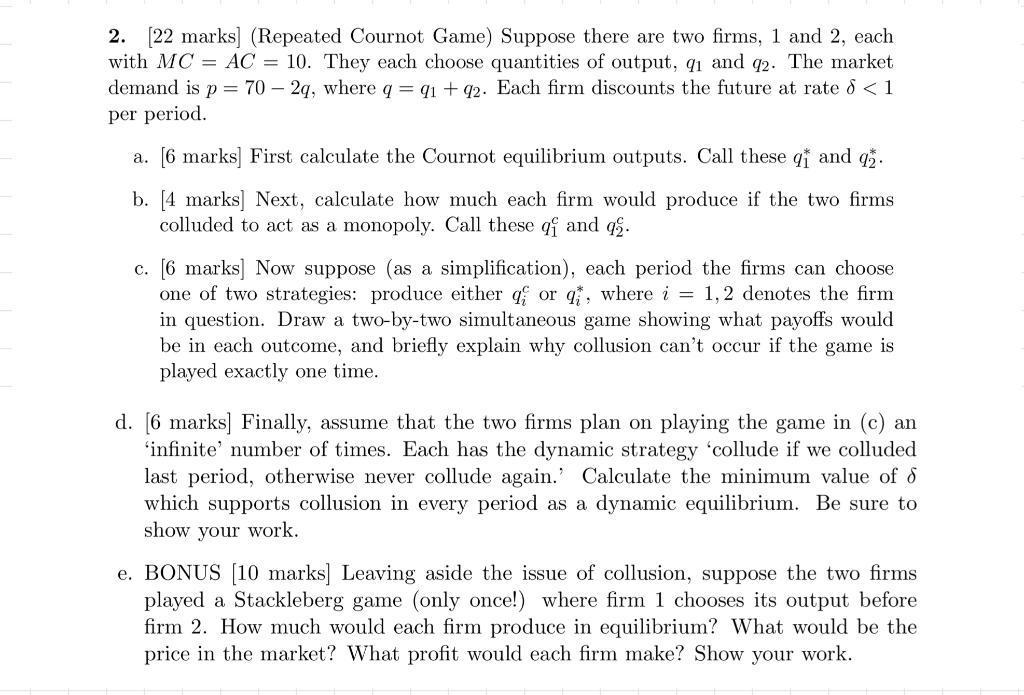Answered step by step
Verified Expert Solution
Question
1 Approved Answer
2. [22 marks] (Repeated Cournot Game) Suppose there are two firms, 1 and 2, each with MC = AC = 10. They each choose

2. [22 marks] (Repeated Cournot Game) Suppose there are two firms, 1 and 2, each with MC = AC = 10. They each choose quantities of output, q1 and 92. The market demand is p=70-2q, where q = 91 + 92. Each firm discounts the future at rate < 1 per period. a. [6 marks] First calculate the Cournot equilibrium outputs. Call these q and q2. b. [4 marks] Next, calculate how much each firm would produce if the two firms colluded to act as a monopoly. Call these q and 92. c. [6 marks] Now suppose (as a simplification), each period the firms can choose one of two strategies: produce either qor q, where i = 1,2 denotes the firm in question. Draw a two-by-two simultaneous game showing what payoffs would be in each outcome, and briefly explain why collusion can't occur if the game is played exactly one time. d. [6 marks] Finally, assume that the two firms plan on playing the game in (c) an 'infinite' number of times. Each has the dynamic strategy 'collude if we colluded last period, otherwise never collude again. Calculate the minimum value of S which supports collusion in every period as a dynamic equilibrium. Be sure to show your work. e. BONUS [10 marks] Leaving aside the issue of collusion, suppose the two firms played a Stackleberg game (only once!) where firm 1 chooses its output before firm 2. How much would each firm produce in equilibrium? What would be the price in the market? What profit would each firm make? Show your work.
Step by Step Solution
There are 3 Steps involved in it
Step: 1

Get Instant Access to Expert-Tailored Solutions
See step-by-step solutions with expert insights and AI powered tools for academic success
Step: 2

Step: 3

Ace Your Homework with AI
Get the answers you need in no time with our AI-driven, step-by-step assistance
Get Started


